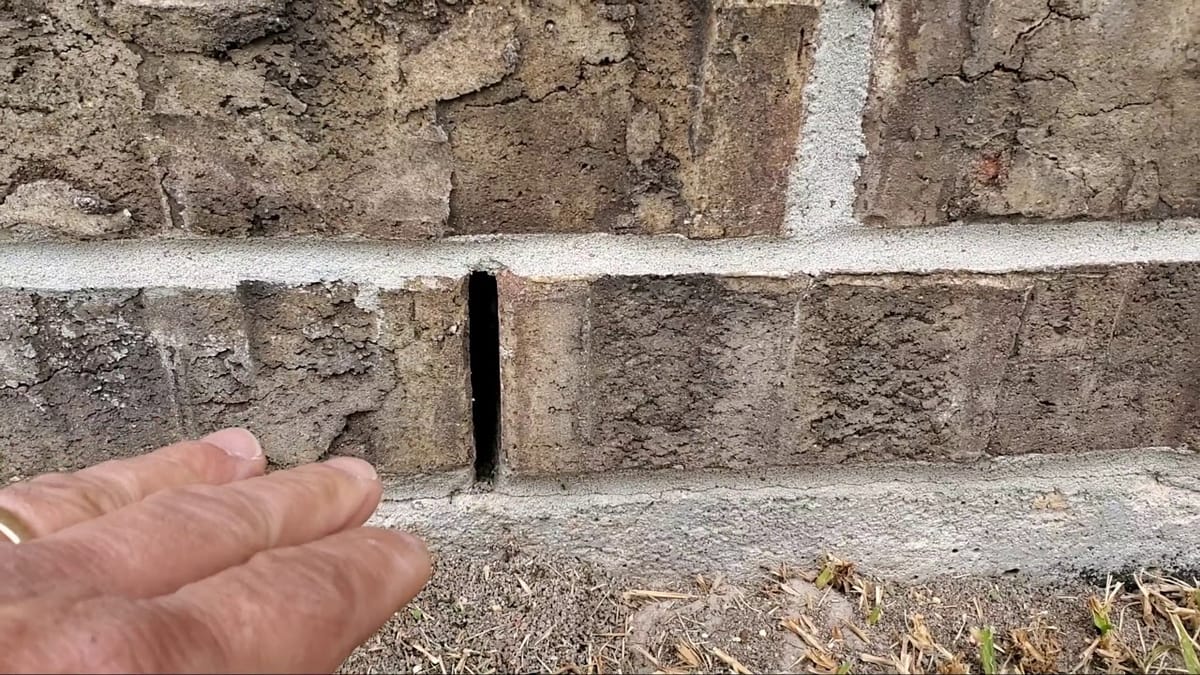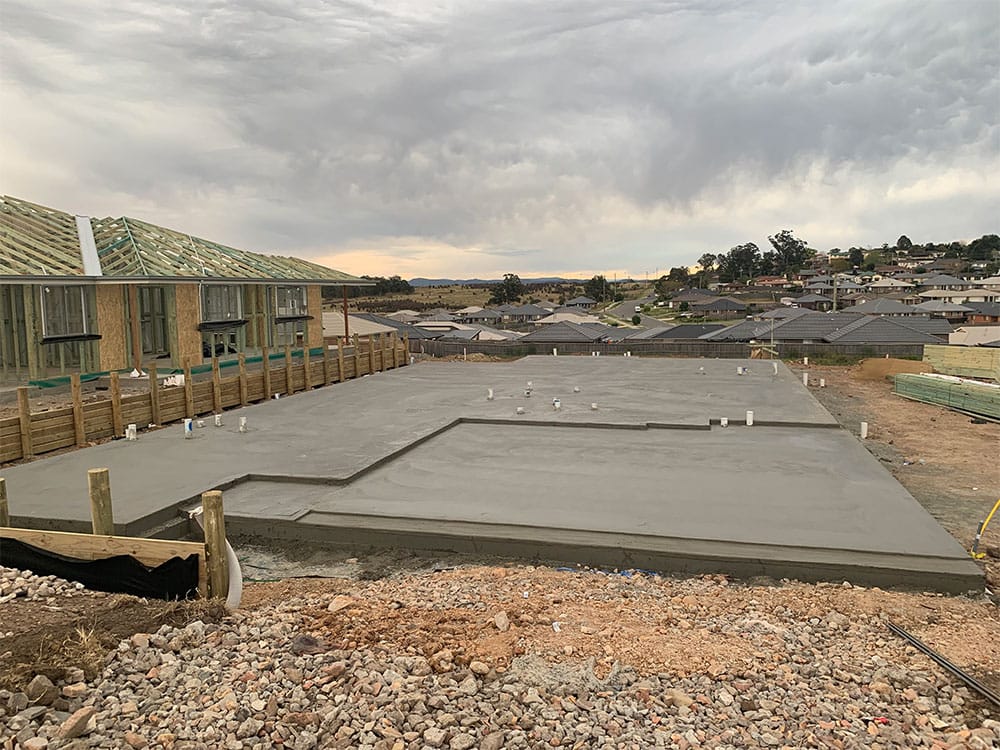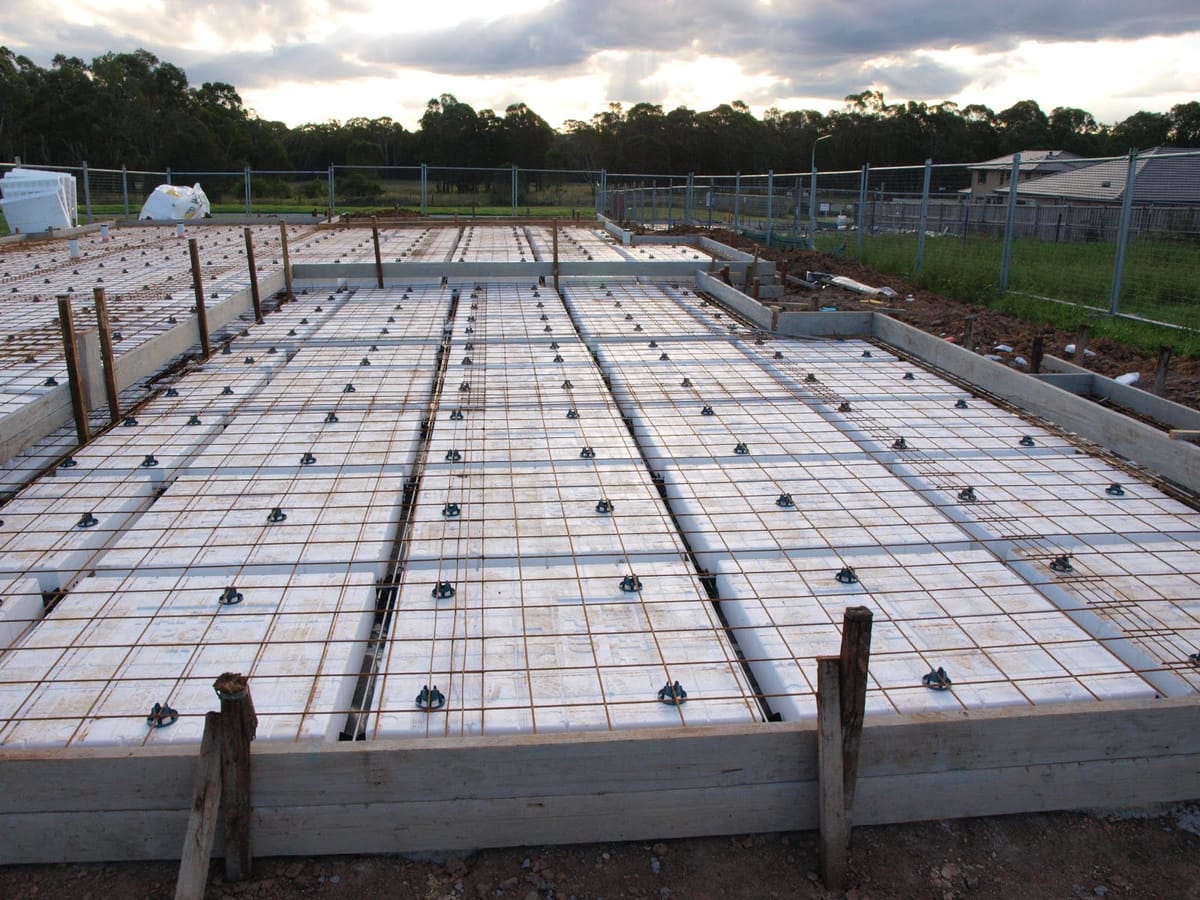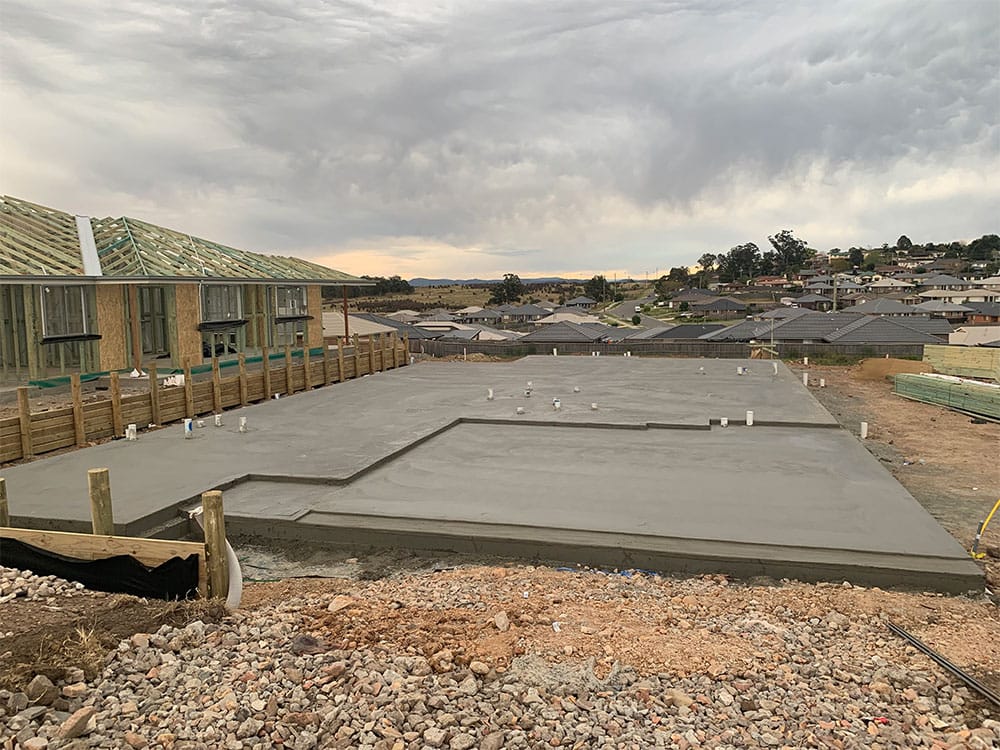1. Introduction – Still Mopping Up?
On a muggy afternoon in Wauchope, SES volunteer Dusty helped carry out carpets drenched in standing water from a brand-new four‑bedder that flooded—even though it was built on compacted fill and passed certification.
"I have been a member of the SES for 30 plus years going to thousands of call outs during bad weather and heavy rain. Most jobs calling for sand bags to stop water running into houses.
There is no hope to prevent the water running inside. the damage bill is millions every time, and lets not look at some of the roof flashings they're a joke. The amount of new subdivisions that are dug into the side of hills or in very low areas are creating water run off directly into homes needs to stop."
“We’ve never seen new houses flood like this,” he later said.
"People just assumed the slab was high enough… until water cascaded through the garage into the living room.”
That scene is not isolated. Across regional New South Wales, Queensland, and Victoria, homeowners and insurers are dealing with the same question: why are new homes still flooding even in modest events?
The 2022–2023 flood season saw unprecedented buyback programs (e.g. in Lismore), and in 2024–25 the average water damage insurance payout for internal flood claims climbed to A$30,361—a 72% increase since 2014.
The Insurance Council of Australia has since pushed for major changes in building rules, especially around Queensland’s proposed Housing Code to better protect homes in flood-prone zones.
At the same time, government-led buyback schemes, like the NSW Northern Rivers Resilient Homes Program, have purchased and demolished or relocated hundreds of homes—many ostensibly still technically compliant with NCC and state codes—leaving residents and councils alike asking whether regulatory systems really get it right.
Major insurance losses, buyback programs such as NSW’s $880 million Resilient Homes Program, and the Insurance Council’s push to embed resilience in the NCC all underscore that doing just enough under the Code no longer protects Australian homeowners from flood risk
2. Minimum Slab Heights — Myths, Codes & What’s Currently Required 📏
Here’s what every homeowner needs to know:
What the codes currently require:
National Construction Code (Housing Provisions): For a Class 1a–10 building, the Deemed‑to‑Satisfy slab heights are specified in NCC 3.1.3.3(b): the slab must be at least
- 100 mm above finished ground level in low‑rainfall or sandy, well‑drained sites,
- 50 mm above impermeable paved surfaces, or
- 150 mm above any other ground condition
There is no legal requirement anywhere in the NCC or QDC that mandates a slab to be 250 mm above the natural ground level (NGL). This 250 mm figure was a builder/best practice number that got around for many years, and rightly so, to help prevent flooding - but it is not currently part of any performance standard.
Why “100 mm” isn’t enough when flood overlays come into play
Where a property lies in a listed flood hazard area, the Queensland Development Code MP 3.5, together with state flood overlay mapping, applies.
It sets the Finished Floor Level (FFL) at not less than the Defined Flood Level + 300 mm freeboard (default) — i.e., floors should be at least that much above the 1% AEP flood level which is the default in MP 3.5
That standard does not rely on NGL at all, and is legally enforceable in Queensland. Builders must use AHD (Australian Height Datum) to set slab RLs. Sticking to the NCC-required minimum of 100 mm doesn’t cut it in flood areas.
QDC MP3.5
View below or click HERE to view and download (opens Docsend).
What used to happen, and why that no longer delivers
Many homes constructed before the 2010–11 floods (especially in coastal floodplains) were built with slab levels of 250–300 mm above NGL, not because the code demanded it, but because it was safer based on experience.
👉️ Over time, slab RLs have crept downward as cost pressures and volume-builder cycles squeezed margins. Value-engineering has to happen somewhere, and it’s easy to justify trimming the ‘rare event’ costs when the goal is to make the price tag easier for buyers to swallow.
That “old‑school” freeboard gave us a buffer — but without a flood‑level plan, the slab height often failed anyway.
Also beware: Slab surveys only record the reduced level (RL) immediately after pouring. But as soon as retaining walls are built, paving is laid, or landscaping takes place, the surrounding ground level can rise—eating away at the freeboard you thought you had.
That’s why it’s important not just to set slab height above ground, but also to actively consider how water flows to, across, and away from the site—not just how high the slab sits.
✅ What you should do:
- Always show slab RLs in AHD on all plans, not “X mm above NGL” or driveway level.
- Make sure the AHD is referenced marked onsite to ensure trades can establish heights referenced to the AHD.
- If in a flood overlay, the slab must meet QDC MP 3.5’s 300 mm freeboard above declared flood level.
- Even outside overlays, the NCC’s 100–150 mm rule is binding — but it’s wise to exceed it when near waterways or in uncertain site drainage conditions.
- 👉️ Allow for a buffer. Passing for compliance and passing in reality are two different things. Talk to people who’ve lived in the area for years — ask what’s happened in the past, and factor that into your plans.
- Sure, you might save money by meeting only the current performance standard, but will you really be saving when a foot of water is flowing through your property?
- It’s not like your house didn’t cost a packet to begin with — so think about how you apportion value and return on investment when budgeting for your new build. In the end, it’s a risk assessment — a balancing act between probabilities and consequences.
The NCC requires only 100–150 mm above ground, and QDC MP 3.5 mandates 300 mm above flood levels in flood hazard zones.
Always specify slab levels in Australian Height Datum (AHD) and design for flood‑resilient freeboard.
3. From Council Inspectors to Private Certifiers — What’s Missing Now? 🕵️
Across NSW, Queensland and other states, there has been an industry-wide shift since the late 1990s: away from local council‑run inspections at key build stages, toward private, builder‑appointed certifiers.
Prior to that, councils routinely inspected projects at foundation/slab, frame and final stages—ensuring site‑specific checks such as drainage fall, cut‑and‑fill compaction, and slab height compliance. That system offered an independent “second pair of eyes” that has all but vanished in most new housing work.
✅ How it works now — and where it falls short
Under the Building Act 1975 (Qld) (since 1998) and similar frameworks in NSW/newer Building Professionals Act 2005 (NSW) and Building and Development Certifiers Act 2018 (NSW/Qld), certifiers hire their own subcontractors or consultants to issue Construction & Occupation Certificates, conduct on‑site inspections, and review final documentation.
However:
- Most developers nominate and employ certifiers, who are paid by the builders—not the landowners or councils.
- There is no guarantee of repeated, hands‑on site visits unless the client pays extra. "Paper-only" sign-offs are common—and cheaper.
- Oversight of certifier performance is limited, with infrequent audits by regulators, and little or no public disclosure of adverse outcomes.
The result? Many homes tick all the right boxes on paper but perform poorly in real conditions—especially on sites with site fill, insufficient fall, or flood exposure.
Principal 1 (from the embed doc above)
The ABCB’s 2021 Discussion Paper (p. 30) states: “The owner should appoint the private building certifier and have a direct contractual relationship with the building surveyor for the performance of their services.”
As the saying goes, he who has the gold makes the rules. When certifiers are appointed and paid by builders, their financial alignment inevitably lies with the builder—not with the home, its long-term performance, or its future owners. Instead of protecting the homeowner’s interests, certifiers are tied to the short-term commercial relationship with the builder who engages them.
👉️ This structural conflict of interest must end. It’s a simple, impactful reform that addresses a dynamic that should never have existed—a system where certifiers, engaged and paid by builders, may be aligned with commercial interests over the long term dwelling quality and homeowners’ safety.
🔍 What the Shergold–Weir “Building Confidence” report found
Commissioned in 2017 by the Building Ministers’ Forum and released in 2018, the Shergold–Weir report flagged serious systemic failures in the certification regime:
- A widespread lack of independence between builders and certifiers creates conflicts of interest (Recommendations 9–11).
- Certifiers are often held in the same design‑and‑construct environment as builders, leading to "novated" relationships where the architect or certifier ends up working for the developer/builder—not the owner.
- Mandatory inspections at notification stages (e.g., slab) are not enforced uniformly across jurisdictions (Recommendation 18), diminishing the ability to catch critical errors early.
- Documentation is often poor or incomplete, and many performance solutions have never been robustly reviewed or audited in practice.
👉️ Less than half of the 24 recommendations had been fully implemented by mid-2021; audit and enforcement powers remain weak in many states.
✅ Practical consequences we see today
- Slab RLs set on the wrong datum or at sketchy elevations, and no inspector checks the actual fall or stormwater path on-site.
- Drainage planning after pour goes undocumented—post‑concrete fills often create water “bowls” around the slab.
- Certification can be virtually invisible to the homeowner, yet their insurer must step in when things fail.

👉 We’ve covered certifiers and compliance in more detail in this post
4. LHA Building Standards: Designed for Support, Built to Fail Rain Events🏚️
At first glance, these homes are a great example of forward-thinking, inclusive design. LHA design standards and NDIS Specialist Disability Accommodation (SDA) homes—particularly those classed as High Physical Support (HPS)—are designed to be accessible for people with complex mobility needs.
Features like zero-threshold entries, step-free showers, minimum 1200 mm door widths, and 1:8 ramp gradients are all part of the spec. That’s the good news.
But in meeting accessibility requirements, these homes can unintentionally create flood risks—especially when drainage planning is skipped, poorly executed, or when practicality and site-specific design thinking aren’t incorporated into the works.
Here’s where the flaw emerges:
🧩 The problem: Accessibility rules override basic waterproofing principles
SDA Design Standard requirements for HPS dwellings specify that the main entry should have a flush threshold—meaning no step or lip. To meet this with a 1:8 compliant gradient ramp, the outdoor entry pad (porch/landing) may need to extend over 1800 mm out from the doorway.
That’s not the issue. The issue is what happens when builders take advantage of a code loophole:
If the porch is more than 1800 mm deep, there is no requirement to provide a grated drain or trench drain at the door.
In other words, a wide slab of concrete can slope gently toward the doorway with no drainage provisions, and it’s still compliant. When heavy rain hits, that wide apron funnels water toward the entry door with no strip drain, no fall away, no trench to redirect runoff.
🛠️ The fix is easy — but no one’s enforcing it
This issue is entirely avoidable:
- A strip drain or grated trench should be installed at every flush-threshold entry, regardless of porch depth.
- Even more effective: include a secondary overflow path that drains away from the building. In extreme flood situations, primary drainage systems can become overwhelmed or blocked—and no matter how well-designed, if there's nowhere for the excess water to go, it will back up against the structure and find its way in through gaps (cracks, weepholes-through walls, under doors, through frames).
- Certifiers and designers must treat condensation & water management as integral to access design, not a competing priority.
These solutions add only a few hundred dollars to the build but prevent thousands in damage and disruption.

see further reading section below for additional posts on this topic
SDA homes often feature wide, step-free entries—but unless drains are installed, or sufficient grading from the dwelling has been done, water has nowhere to go but inside. Compliance rules aren’t enough. Good practice demands more - not just ticking a box.
5. Subdivisions on Hills and Floodplains — A Planning Problem 🌧️🏞️
Flooded homes aren’t always the result of poor individual design. Sometimes, the problem is baked in—right from the subdivision layout stage.
Over the past two decades, Australia has seen a surge in residential estates carved into former farmland, floodplains, or steep hillsides. Under pressure to release housing stock quickly and affordably, many councils have re-zoned marginal land without full consideration of drainage implications or long-term water flow paths.
Let’s look at some of the typical issues:
🧱 Cut-and-Fill Plateaus: Great for Build Speed, Terrible for Water
Modern subdivisions often rely on mass earthworks to create flat, buildable lots. The standard approach:
- Cut into the slope at the rear, fill at the front.
- Build retaining walls to hold soil at lot boundaries.
- Construct flat pads just wide enough for a slab and side path.
- failure to add diversion drains at batter toes
- failure to meet basic subsidence policy requirements
- Run roads and footpaths on elevated crowns between lots.
- Zero consideration for overland flow between properties—so if your lot is the lowest in the street, and surrounded by recently filled or rutted land, you're often stuck with the consequences. In Australia, councils have limited power to intervene in such cases, and resolution is typically limited to civil action.
While this works on paper, the outcome is often a series of shallow “bowls” where water accumulates:
- The slab may be flat, but surrounding surfaces can trap water.
- Footpaths built higher than lots can direct runoff toward houses.
- Crossfalls toward neighbouring fences (instead of streets or drains) create private flood channels—often unnoticed until heavy rain.
🏞️ Subdivision on Floodplain Farmland — A Risk Rebranded
Many housing estates from Caboolture to Camden Haven are now built on low-lying farmland previously used for grazing or sugarcane. These lands are:
- Naturally saturated.
- Close to creeks or rivers.
- Prone to overland flow and flash flooding, especially during La Niña years.
Developers may reclassify these sites using civil works, detention basins, and fill (compaction certificates) to meet stormwater discharge requirements. But unless site-specific flood modelling and house‑by‑house RL planning is implemented, many homes are left vulnerable—even if the estate is technically compliant with runoff guidelines.
🔍 Drainage Often Left to the Individual Lot
In these new estates:
- There’s usually no consistent fall across multiple blocks.
- Drainage is often left to each builder, who designs for their lot without considering the neighbour’s overflow or the original natural flow paths.
- Many councils don’t enforce inter-lot drainage plans, especially after subdivision approval.
- Builders then pour slabs without adequate fall or berms, relying on “future landscaping” to solve drainage later—which rarely happens properly.
🏛️ Councils Focused on Planning Codes, Not Performance
Planning schemes tend to focus on:
- Road connectivity.
- Minimum lot size (yield for developers).
- Open space percentage.
But drainage and water movement across sites is too often treated as a box-ticking exercise handled by the civil contractor—and forgotten by the time homes are built.
The result? On paper, a whole suburb can tick every box—but when a storm hits, it may still fail spectacularly. And guess who’s blamed? Nobody—because every development met current standards. Your insurer certainly won’t care. Ultimately, it's the homeowner who pays with increased premium, that is if you can even get coverage to begin with (which is a condition of bank finance/lending).
Steep slopes, shallow “cut and fill” lots, and floodplain farmland all create water movement challenges—but drainage is often left to individual builders, with little council oversight after roads are in.
6. Box-Ticking Culture — Minimum Compliance Is the Standard ✅📉
In theory, Australia’s construction code and planning regulations are designed to protect people and property. In practice, they’ve become the floor—not the foundation for quality.
Across every part of the residential construction industry—from design to final inspection—there’s a growing culture of doing just enough to pass. Minimum slab heights, token drainage design, questionable flashing installs, and subpar material substitutions are all too common.
Here’s what that looks like in the real world:
🧱 “What’s the minimum I can get away with?”
Builders under time and cost pressure (especially in the volume market) often approach every decision with a minimum viable product mindset:
- Slab just 100 mm above ground? Tick.
- No strip drain at flush entry? Tick.
- Roof flashings not sealed but technically “present”? Tick.
- Paving falls toward the house, but it passed certifier sign-off? Tick.
No one is rewarded for doing better. In fact, exceeding standards is seen as too expensive or too slow—especially when competitors aren’t doing it.
🕒 Fast Builds, Fast Failures
In an environment where houses must be finished in 12–16 weeks to meet funding deadlines and workflow quotas, quality control gets squeezed out.
Certifiers, often engaged directly by the builder or developer, are incentivised to approve quickly. Homeowners usually don’t realise something was missed until after the first big rain.
There’s no margin for craftsmanship. Only compliance.
🗨️ Dusty’s Quote
To borrow from Dusty, the SES volunteer in Wauchope:
“There’s no hope to stop the water if it’s built like that from day one.”
And that’s the hard truth. Once the slab’s down and the paving’s done wrong, it’s already too late.
🔄 The Consequences
This culture of minimums means:
- Homes pass inspections but don’t perform in real-world conditions.
- Builders avoid liability by claiming code compliance.
- Insurers wear the loss—until they pass it back to homeowners via premiums.
- Public trust in new housing quality continues to erode.
Today’s building culture rewards the bare minimum. If the design isn’t right for the site, or drainage is skipped to save costs, homes may flood—even if every box was ticked.
7. Industry Messaging — “Let Builders Build” Is a Red Flag 🚩🧱
If you’ve spent any time reading industry press, watching housing announcements, or listening to lobby groups, you’ll have heard the latest spin:
“We need to cut red tape.”
“Builders know what they’re doing — get out of the way.”
“We can’t fix the housing crisis if you keep slowing us down with regulations.”
It sounds reasonable at first — Australia’s in a housing supply crunch, and we absolutely need more homes. But this kind of messaging creates a false binary: that you can either have speed or quality. And increasingly, it’s used to justify the removal of oversight, inspections, or protections that actually prevent disasters — like flooded homes.
🏚️ What Deregulation Really Looks Like
In the past few years, we've seen:
- Private certification promoted over independent council inspections.
- Performance solutions replacing prescriptive requirements — allowing loopholes and “creative” interpretations.
- Shorter assessment time frames, limiting council planners’ ability to review site-specific drainage or slope issues.
- “Self-certification” allowances, where builders sign off their own work.
Each of these steps removes a layer of accountability — in the name of “efficiency”.
📣 Who Benefits From Faster, Less Scrutinised Builds?
The builders? Maybe.
The developers? Almost certainly.
But the homeowner? Rarely.
You’re left with homes that pass on paper, but leak at the first big storm.
Drainage that looks fine on the DA but fails in the driveway.
Slabs poured to “minimums” that don’t survive landscaping.
And when it all goes wrong, the messaging flips:
“Well, it was signed off by… so it’s not our fault.”
🧩 Undermining Public Trust
When industry bodies push to remove rules, reduce inspections, or streamline everything, they frame it as a fix. But to many homeowners — especially those whose homes have already flooded — it feels like a system doubling down on failure.
Without independent checks, robust standards, and real consequences, the gap between what’s approved and what works continues to widen.
8. Responding to Damage Instead of Preventing It 🔁🚨
Australia has become remarkably good at responding to disasters — SES callouts, flood clean-ups, emergency funding, and home buybacks. But we’re consistently failing at the other half of the equation: prevention.
Instead of designing homes and planning suburbs to withstand extreme weather, we rely on:
- Insurance claims,
- Government compensation,
- Disaster declarations, and
- The community spirit of volunteers to mop up the mess.
It’s reactive, expensive, and often traumatic.
🧹 Buybacks, Floodgates, and the High Cost of Cleanup
Take Lismore. After the catastrophic 2022 floods, the government launched a $800+ million buyback and home-raising program — paying homeowners to leave flood-prone properties or elevate them.
But many of those homes were built decades ago — and some had even been rebuilt after prior floods. What if better siting, higher slabs, or drainage enforcement had prevented those rebuilds in the first place?
Or Maryborough, where the levee system failed and CBD businesses flooded again. Engineers had warned of weaknesses, but repairs weren’t made. Response came after disaster — again.
💰 The Real Cost of “It’ll Be Right”
Emergency response is expensive. But more than that, it’s demoralising and cyclical:
- Homeowners suffer losses, twice.
- Insurers raise premiums or withdraw entirely.
- Councils pay out or repair public assets.
- State and federal governments foot the rest.
Meanwhile, builders and certifiers often walk away — protected by limited liability or the simple excuse of “code compliance”.
🧠 A Smarter System Is Possible
Flood-resilient design isn’t rocket science:
- Raise slabs based on flood overlays and real drainage patterns.
- Install strip drains where water will flow.
- Use site-specific assessments — not cookie-cutter designs.
- Require real inspections — not just paperwork sign-offs.
Yet in most jurisdictions, these measures aren’t mandated. They’re optional. And when left optional in a race-to-the-bottom market, they’re usually skipped.
⛑️ The SES Should Be the Last Resort
Volunteers like Dusty — who spend weekends wading through flooded lounge rooms — should be responding to unexpected weather events, not predictable design failures. Every time a new home floods in a mild storm, it’s not nature’s fault. It’s ours.
We can’t keep relying on buybacks, bailouts, and brooms. Preventing flood damage costs less than fixing it — and it protects lives, homes, and public trust.
I’m not saying it’s easy—trust me, I get how tough it is to roll out big, systemic reforms. But maybe that’s part of the problem. Without a truly standardised national construction code, free from state-by-state variations, it becomes nearly impossible to implement resilient, flood-aware building practices at scale.
The National Construction Code (NCC) is Australia’s go-to building standard—but every state and territory is allowed to modify it via their own legislation, adding variations, deletions, or additions.
South Australia, for instance, has imposed a 10-year moratorium on updates to the NCC—including energy efficiency and accessibility improvements—frustrating efforts for national consistency and climate resilience.
This patchwork means a builder could meet compliance in Western Australia, then build in Queensland—using totally different rules, even though the flood and climate risks may be similar.
A truly national approach doesn’t eliminate regional considerations—it aligns them for implementation efficiency and quality assurance. Imagine builders working to one code, but dialing in energy and resilience factors by climate zone only—like insulation levels, flood buffers, and thermal measures.
👉️ Maybe it's time we asked: should we nationalise our construction codes, insurance requirements, and compliance systems?
If a plumber or a builder could work to one standard across the country, we’d not only streamline skill deployment and training (I think ive heard this mentioned as issue to productivity...sarcasm)—but also create opportunities to elevate resilience everywhere, consistently.
9. Insurance Premiums as an Indirect Tax on Poor Construction 💸🏚️
Here’s the uncomfortable truth: when builders cut corners and certifiers wave it through, it’s not them who foot the bill when things go wrong.
It’s you—the homeowner—who pays through higher insurance premiums, limited policy coverage, or flat-out denial of claims.
Over time, insurance becomes less of a risk-sharing tool and more of a financial penalty for systemic failure. In effect, Australians are paying a stealth tax for poor construction oversight.
💥 What the Numbers Say
According to the Insurance Council of Australia (ICA), water damage (including storm and flood ingress) is now one of the top claim categories. Some figures:
- The average claim for water ingress in new homes is now over $30,000, and rising.
- In high-risk postcodes, premiums have increased by more than 50% in the last five years.
- In flood-prone zones like Lismore, residential policies have been withdrawn entirely by major insurers—or offered at unaffordable prices.
It’s no longer just about risk — it’s about insurability.
🧱 Why Builders and Certifiers Aren’t Held to Account
When a home floods because:
- The slab was too low,
- The paving fell toward the house,
- The downpipes weren’t connected to stormwater,
… the builder can still argue that everything was technically compliant.
The certifier signed off the plans.
The code doesn’t mandate site-specific risk management unless the overlay demands it.
So the claim lands on the homeowner’s insurer—not the people who built or approved the problem.
🧮 Over Time, This Becomes a Cost on Everyone
As insurers take on more avoidable risk:
- They pass the cost on to policyholders across the board,
- Risk-based pricing pushes people out of cover (or into under insurance),
- Taxpayer-funded disaster relief fills in the gaps when insurers walk away.
This is a classic moral hazard — those best positioned to reduce the risk are not the ones who suffer the consequences.
Homeowners pay more—not because their home is old or broken—but because the system let new homes be built poorly in the first place.
10. The Property Risk Economy — Everyone Wins Except the Homeowner 💰⚖️
The way our property system is set up means that almost every major player — banks, valuers, insurers, and governments — can profit from rising property values, even if those properties are at increasing risk of flooding. The only party who consistently holds the long-term risk? The homeowner.
Short-Term vs Long-Term Risk: A Misalignment Problem
- Banks and Valuers:
Bank-appointed valuers assess properties to protect the lender’s loan-to-value ratio (LVR). Their focus is short-term — what the property could fetch in a quick sale if you default. They don’t assess long-term resilience against floods, drainage failure, or climate impacts. - Insurers:
Insurers think long-term, pricing policies based on decades of risk data. They adjust premiums upward (or withdraw cover entirely) in areas with rising flood risk. This protects their balance sheet but raises costs for homeowners — sometimes to the point of making cover un-affordable. - Governments:
State governments charge land tax and councils set rates based on land valuations, which often rise in line with market trends — even in flood-prone zones. Increased values mean increased revenue, regardless of whether the property’s long-term viability is improving or worsening.
The Inevitable Result
This system creates a structural misalignment:
- Banks ensure short-term safety for themselves.
- Insurers protect their long-term liabilities.
- Governments keep collecting taxes.
- The homeowner ends up paying for all three — and wears the loss if things go wrong.
When a new home in a flood-prone area fails, the financial downside doesn’t flow back to the builder, the certifier, the bank, or the government. It lands squarely on the person living in it — the one who trusted the system to keep them safe.
11. What Homeowners and Buyers Can Do Right Now 🏡🔍
It’s easy to feel powerless in the face of poor planning, disappearing inspectors, and industry shortcuts. But there’s good news: there are actions you can take before, during, and after construction to protect yourself and your property from future water damage.
Whether you're buying, building, or already living in your home, here’s what you can do:
🗺️ Before You Buy: Know the Land
- Check flood overlays. Every local council provides flood mapping (sometimes under “flood hazard overlays” or “overland flow paths”). It shows known risks based on 1% AEP events or historical flooding.
- Review site contours. Sloped sites can create runoff issues even if they're not flood zones.
- Ask the right questions. What’s the site’s Finished Floor Level (FFL) in AHD? Has flood modelling been done? Is the developer using cut-and-fill pads?
📝 Tip: If slab RL is described only as “X mm above NGL,” push for clarification in AHD. This is the only meaningful way to confirm elevation against known flood levels.


📐 During Design & Construction: Put It in Writing
- Include slab height clauses in your building contract — e.g. “Slab RL to be not less than 300 mm above adjacent ground level and 500 mm above known flood level where applicable.”
- Ask for drainage design drawings. Most builders won’t provide them unless prompted — insist on a stormwater plan that shows fall, surface gradients, and stormwater connection points.
- Engage an independent inspector (not the builder’s certifier) to review slab heights, site fall, and downpipe connection before frame stage.
Carry out a stormwater test at handover. A simple hose test around the house can reveal whether water runs away from or toward your slab.
🧽 After Handover: Maintain and Monitor
Yes, you have to do work on your house, maintenance and keep an eye on its performance over time!
- Keep garden beds, mulch, and paving at least 75–100 mm below the slab edge to prevent bridging.
- Watch for “landscaping creep” — where soil, turf, or paving slowly builds up to match slab height, eliminating the freeboard.
- Inspect flashings and gutters annually. Look for corrosion, lifted edges, or signs of water marks at eaves.
- Install or improve overflow paths — especially if your home has parapets or is lower than neighbouring properties.
🔍 Final check: Use a level or phone app to confirm water falls away from the house perimeter. If not, re-grade.
Conclusion – Raise Standards (and Slabs) So the SES Can Stay Home 🛌🚫🌊
The image of SES volunteers like Dusty wading through ankle-deep water in brand-new homes isn’t just heartbreaking — it’s preventable. And it should be unacceptable.
The SES operates on a shoestring—reliable but barely resourced. With minimal full-time staff and a predominantly volunteer force, they’re expected to be always ready, in all conditions, whenever disaster strikes. Despite funding shortfalls, they stand among the first to respond—from tarping roofs to hauling sandbags to pumping water out of homes that should never have flooded—doing often thankless work that outpaces the system’s capacity to support them.
The uncomfortable truth? The cost of not fixing the problem might be a calculated political choice. Governments know that stronger building compliance — higher slab RLs, mandatory drainage design, more inspections — would raise construction costs. And that’s rarely popular with voters already feeling the pinch. So instead, it’s politically easier to keep the rules soft, underfund the SES, and let them “pick up the pieces” when things fail.
But this approach doesn’t just break the back of the SES — it entrenches the cycle of building to the bare minimum, flooding, and cleaning up again. In the long run, everyone pays more: homeowners through losses and insurance premiums, taxpayers through recovery funding, and SES volunteers through burnout.
If we raised standards and designed for the real risks, the SES could focus on genuine emergencies — not mopping up failures that were “compliant” from day one.
We’re not dealing with “acts of God” — we’re dealing with acts of omission.
💬 Frequently Asked Questions (FAQ)
1. Is a 250 mm slab height above ground level mandatory in Australia?
The NCC requires only 100–150 mm above finished ground level depending on the site conditions, and 50 mm above sloped paving. However, flood-prone areas may require 300 mm above the defined flood level per QDC MP 3.5 or local planning overlays.
2. What’s the difference between NGL and AHD when setting slab levels?
- NGL (Natural Ground Level) is the unmodified ground level at the site.
- AHD (Australian Height Datum) is a nationally consistent elevation reference.
For flood resilience, slab RLs should always be stated in AHD, as it allows accurate comparison against flood modelling and overlays.
3. Are private certifiers allowed to approve drainage and slab heights without inspections?
Yes — in most states, private certifiers can issue approvals based on documentation alone. On-site inspections are not always mandatory, unless additional scrutiny is contracted or required by a specific council overlay or development approval condition (MCU).
4. My builder said my site isn't in a flood zone — do I still need to worry about slab height?
Yes. Even if your lot isn't in an official flood zone, overland flow, poor drainage, and site cut-and-fill practices can create water risks. Always request a site-specific drainage plan, and consider raising the slab height for added peace of mind.
5. Do SDA (NDIS) homes really risk flooding because of accessibility design?
They can. While SDA design guidelines promote zero-threshold entries, there are loopholes where drainage isn’t required for porches over 1800 mm deep. Without strip drains or proper grading, these entries can funnel water into the home.
6. Should the council be responsible for drainage issues between lots?
Not always. Councils approve subdivisions and may specify basic drainage requirements, but individual lot drainage is often left to builders, who may not consider how neighbouring lots interact. That’s why inter-lot drainage planning is crucial.
7. Can I ask for a slab height clause in my building contract?
Absolutely — and you should. Include a clause specifying that the Finished Floor Level (FFL) must be a minimum of 300 mm above surrounding finished ground or 500 mm above flood level (if applicable), and must be shown in AHD on the site plan.
8. Are rising insurance premiums really linked to poor construction?
Yes. Insurers base premiums on risk, and poor drainage, low slab heights, and water ingress risks increase that. In high-claim suburbs, insurers may withdraw cover entirely or impose excesses. In that way, insurance becomes a cost on system failure.
9. I’m not building — can I still protect my existing home from flooding?
Yes. You can:
- Regrade paving to fall away from the house,
- Install strip drains at doors and driveways,
- Lower soil or mulch beds away from slab edges,
- Keep gutters clean and add overflows,
- Add sumps, pumps with flay lay hose overflows if you know your going to have an issue.
- In rural or larger properties, create bunds or small dam areas to redirect or temporarily store stormwater away from the house. 👉️ See the video below for the mother of all dams — and how it stopped water from getting in.
- And check flashings annually for leaks or corrosion.
10. Who can I talk to if I’m unsure about my home’s drainage or flood risk?
- Independent building inspectors can assess slab heights, site fall, and roof drainage.
- Local council flood engineers can explain overlays and flood levels.
- Hydraulic designers or engineers can model water flow specific to your lot and home.
Further Reading

1







































